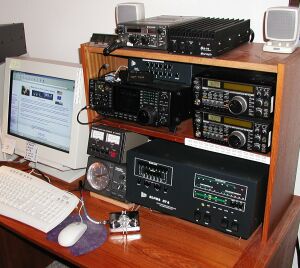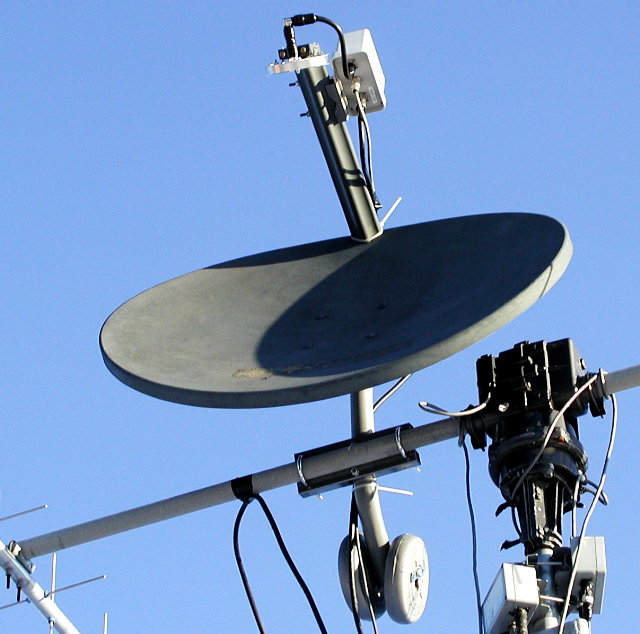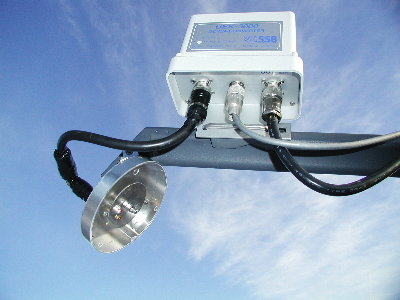 |
Top Shelf
|
 |
Top Shelf
|
This equipment has allowed me to contact amateur radio stations in 310 countries around the world. My interests run the spectrum of frequencies from 160 meters (1.8 MHz) to microwave (2.4 GHz), including talking to stations by satellite. Types of transmissions that I use include basic and reliable Morse Code (referred to as CW, or continuous wave), voice (on single sideband, FM and AM modes), and digital forms of transmissions, which use my computer's sound card to encode and decode transmissions. Digital modes include SSTV (slow scan television, allowing me to exchange pictures with hams around the world), RTTY (radio teletype), PSK31 (similar to RTTY but using a very small spectrum only 31 cycles wide), and other exotic methods of exchanging information with other hams such as MFSK16, Throb, and Hellschrieber.

Although it may LOOK warm by the sunny sky, this is the result of very cold temperatures (about -15 F) and humid air. The resulting "hoar frost" coats everything, including antennas. This causes them to "de-tune". Eventually the frost dissipates, but can be helped along by shaking the tower and then trying to dodge the falling ice and snow! |

This is my home made microwave satellite antenna. It consists of a surplus commerical TV antenna (2' x 3'), a downconverter from 2.4 GHz to 144 MHz, and a "patch antenna feed" from G3RUH. I finally found a use for part of my weight set, which counterbalances the antenna on the mast. Click here to learn more. |
 This is a close up shot of the patch feed and UEK3000 down converter used to talk to hams around the world by sending signals to an amateur radio satellite, providing the opportunity to talk to hams around the world any time the satellite is overhead. Due to it's highly elliptical orbit, it seems to hang in the sky for up to 10 hours at a time. |
 This is the tower installation for my high frequency (HF) antennas, consisting of a Mosley Pro57B beam for five bands (10 through 20 meters), and, at the top, a 6 meter Cushcraft beam. I use a "Hazer" system to lower the antennas to the ground to allow me to work on them - much safer than cimbing the tower! |
 When winter sets in, even the tower and HF antennas can be covered in ice and snow. They have survived wind gusts in excess of 125 miles per hour! |
 This dizzying shot shows the hazer (a tram) mounted to the tower that carries the antenna system up and down - time has told me I'm mortal, and this helps extend my enjoyment of amateur radio! |